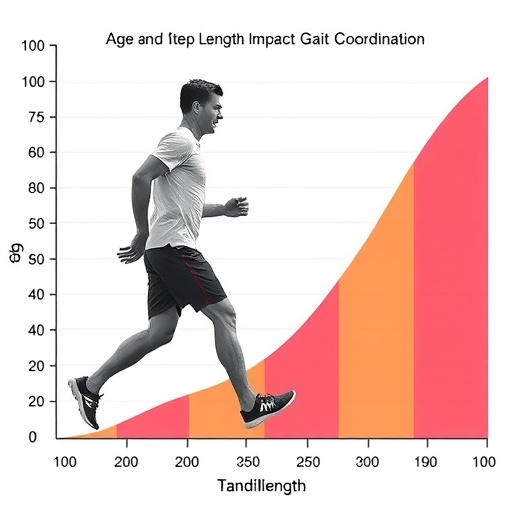In the delicate and high-stakes arena of neonatal intensive care, particularly for very low birth weight (VLBW) infants, the procedure of tracheal intubation stands as a critical yet perilous intervention. Recent advancements documented in a pioneering quality improvement initiative have demonstrated that refining premedication protocols can profoundly mitigate the risks associated with this life-saving procedure, thereby enhancing outcomes for the most vulnerable patients. This breakthrough research, led by Daniel, Johnston, DeMartino, and colleagues, sheds light on a nuanced approach to premedication that significantly reduces tracheal intubation adverse events (TIAEs) and severe desaturation episodes in infants weighing less than 1500 grams.
Tracheal intubation in neonatal care is inherently complex due to the fragile physiology of VLBW infants, whose organ systems and respiratory mechanics are not fully matured. These infants are exceptionally susceptible to the physiological stress and potential trauma caused by the insertion of an endotracheal tube. Historically, the procedure has been fraught with risks, including hypoxemia, bradycardia, and even airway trauma, all collectively termed tracheal intubation adverse events. These complications not only jeopardize immediate survival but can also exert long-lasting effects on neurodevelopmental outcomes.
To address these critical challenges, the research team focused on optimizing the pharmacological regimen administered before intubation. The standard approach to non-emergent intubation traditionally includes premedication with a vagolytic agent and an analgesic. Vagolytic agents serve to blunt vagally mediated reflex bradycardia by inhibiting the parasympathetic nervous system, while analgesics reduce the pain and discomfort experienced by the infant during the procedure. However, this combination, while beneficial, does not fully abolish the risk of adverse events or the physiological stress triggered by intubation maneuvers.
The innovative aspect of this study lies in the implementation of rapid sequence intubation (RSI) for non-emergent situations in VLBW infants. RSI encompasses premedication with a three-drug regimen: a vagolytic, an analgesic, and a paralytic agent. The paralytic, often a neuromuscular blocking agent, induces a temporary muscle relaxation that facilitates smoother and quicker intubation. This procedure aims not only to improve the success rate of intubation on the first attempt but also to minimize the duration of airway compromise and the distress associated with the procedure.
Clinical data emerging from this initiative revealed a marked reduction in the frequency and severity of TIAEs when RSI was employed compared to traditional premedication practices without paralysis. The enhanced immobility and abolition of reflex responses during intubation allowed clinicians to perform the procedure with greater precision, reducing the incidence of complications such as airway trauma or hypoxic episodes. Additionally, the study detailed a protocol adaptation for infants undergoing surfactant administration with immediate extubation, wherein premedication without paralysis was preferred to suit the rapid respiratory support transition.
Another critical dimension illuminated by this research is the delicate balance between pharmacologic intervention and infant safety. The administration of paralytic agents in such small, fragile patients naturally raises concerns about potential adverse effects, including prolonged paralysis or respiratory compromise. However, the team’s rigorous monitoring protocols and attention to dosing parameters ensured that the paralytic effects were transient and reversible, with no reported increase in adverse outcomes attributable directly to the medications themselves.
From a mechanistic perspective, the inclusion of a paralytic agent addresses the fundamental challenge of suppressing reflexive airway protective mechanisms that can paradoxically complicate intubation. These reflexes, while protective in healthy individuals, may provoke violent coughing, laryngospasm, or bronchospasm in neonates, thereby exacerbating hypoxemia and bradycardia risk. By temporarily relaxing the musculature, RSI neutralizes these involuntary responses, affording a controlled environment for intubation.
Beyond the immediate physiological benefits, the enhanced premedication protocol has broader implications for neonatal care paradigms. Reducing TIAEs aligns with the overarching goal of minimizing iatrogenic harm and optimizing the therapeutic environment in neonatal intensive care units (NICUs). Improved intubation safety may reduce the need for repeated attempts and prolonged mechanical ventilation, both factors known to contribute to adverse long-term pulmonary and neurological sequelae.
The implementation of this enhanced premedication regimen necessitates a multidisciplinary approach, incorporating neonatologists, nurse practitioners, respiratory therapists, and pharmacists to ensure strict adherence to updated protocols. The researchers underscore the importance of ongoing education and simulation-based training for staff to familiarize them with the pharmacodynamics of the medications used and the procedure’s refined technique, fostering confidence and competence across the care team.
Furthermore, the study’s findings highlight the necessity of individualized care strategies tailored to each infant’s clinical status. Premedication regimens must be carefully adjusted based on gestational age, weight, respiratory condition, and the urgency of intubation. This personalized approach underscores the future direction of neonatal procedural sedation: precision medicine that respects physiological variability while striving for safety and efficacy.
Looking ahead, the research team calls for more extensive multicenter studies to validate their findings across diverse populations and clinical settings. Such trials would help to refine dosing regimens, explore alternative paralytic agents, and evaluate potential long-term neurodevelopmental outcomes associated with the new premedication protocols. There is also an expressed need for integrating novel monitoring technologies that can provide real-time feedback on drug effects and physiological responses during intubation.
In conclusion, the introduction of rapid sequence intubation with optimized premedication stands as a transformative advancement in neonatal care for VLBW infants. By systematically reducing the incidence of tracheal intubation adverse events, this approach dramatically enhances procedural safety and potentially improves the overall trajectory of vulnerable neonates in intensive care. As NICUs worldwide grapple with the complexities of neonatal airway management, these findings offer a beacon of hope and a clear pathway toward safer, more effective interventions.
This landmark research underscores an essential paradigm shift in neonatal airway management, emphasizing that meticulous attention to pharmacologic detail can yield profound benefits in survival and quality of life for the tiniest patients. As more institutions adopt these refined protocols, the collective knowledge and clinical outcomes in neonatal intensive care will undoubtedly advance, setting new benchmarks for care standards and patient safety.
Subject of Research: Tracheal intubation in very low birth weight (VLBW) infants and strategies to reduce associated adverse events through optimized premedication.
Article Title: Reducing tracheal intubation adverse events and severe desaturations by increasing intubation premedication use in infants <1500 g: a quality improvement initiative.
Article References:
Daniel, J., Johnston, L.C., DeMartino, C. et al. Reducing tracheal intubation adverse events and severe desaturations by increasing intubation premedication use in infants <1500 g: a quality improvement initiative. J Perinatol (2025). https://doi.org/10.1038/s41372-025-02517-5
Image Credits: AI Generated
DOI: 24 November 2025
Tags: effective premedication in neonatologyenhancing safety for low birth weight infantshypoxemia and bradycardia in infantsimproving neonatal care outcomeslong-term effects of intubation inminimizing trauma during intubationneonatal respiratory support techniquespharmacological strategies for intubationpremedication protocols for neonatal intubationquality improvement in neonatal intensive carereducing adverse events in infant intubationtracheal intubation risks in VLBW infants





